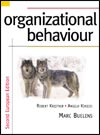 |
1 |  | 
According to the perceptual model of communication, encoding consists of translating mental thoughts into code or language that can be understood by others. |
|  | A) | True |
|  | B) | False |
 |
 |
2 |  | 
Noise in the communication process is anything that interferes with the transmission and understanding of a message. |
|  | A) | True |
|  | B) | False |
 |
 |
3 |  | 
Personal written communication has greater information richness than a telephone conversation. |
|  | A) | True |
|  | B) | False |
 |
 |
4 |  | 
Researchers found that leaning backward is a nonverbal cue that communicated immediacy. |
|  | A) | True |
|  | B) | False |
 |
 |
5 |  | 
The communication pattern most frequently found in the grapevine is the cluster pattern. |
|  | A) | True |
|  | B) | False |
 |
 |
6 |  | 
The output of encoding is |
|  | A) | created meaning. |
|  | B) | a message. |
|  | C) | intended meaning. |
|  | D) | noise. |
|  | E) | a medium. |
 |
 |
7 |  | 
The ________ medium has these information richness characteristics: very slow feedback, a limited visual channel, predominantly impersonal types of communication, and a natural language. |
|  | A) | face-to-face |
|  | B) | telephone |
|  | C) | formal numeric |
|  | D) | personal written |
|  | E) | formal written |
 |
 |
8 |  | 
A(n) ________ communication style is expressive, self-enhancing, and based on treating oneself and others with dignity and respect. |
|  | A) | nonassertive |
|  | B) | assertive |
|  | C) | reasons |
|  | D) | aggressive |
|  | E) | results |
 |
 |
9 |  | 
Which of the following statements about nonverbal communication is true? |
|  | A) | Learning backward communicates defensiveness. |
|  | B) | A smile conveys the same meaning in any culture. |
|  | C) | Men do more touching during conversations than women. |
|  | D) | Folding one's arms is a way of communicating immediacy. |
|  | E) | People tend to avoid eye contact when discussing bad news. |
 |
 |
10 |  | 
Which of the following factors has a negative impact on listening comprehension? |
|  | A) | Being ego-involved with the speaker. |
|  | B) | Being female. |
|  | C) | The message contains views similar to those of the listener's. |
|  | D) | The message disconfirms expectations of the listener. |
|  | E) | The speaker is not visible to the audience. |
 |
 |
11 |  | 
________-style listeners don't like to beat around the bush. They want to hear the bottom line first, then ask questions. At times, they may sound blunt or even rude. |
|  | A) | Process |
|  | B) | Assertive |
|  | C) | Aggressive |
|  | D) | Results |
|  | E) | Reasons |
 |
 |
12 |  | 
Which of the following is a benefit of using E-mail in the workplace? E-mail |
|  | A) | increases the cost of distributing information to large numbers of employees. |
|  | B) | increases the amount of time necessary to disseminate information. |
|  | C) | fosters flexibility, especially with the use of portable computers. |
|  | D) | hampers effective teamwork. |
|  | E) | increases the cost associated with print duplication, because workers tend to make hard copies of numerous messages. |
 |
 |
13 |  | 
________ involves using state-of-the-art computer software and hardware to help people work better together. |
|  | A) | Virtual computing |
|  | B) | Telecommuting |
|  | C) | Collaborative computing |
|  | D) | E-mail |
|  | E) | Video conferencing |
 |
 |
14 |  | 
Stereotypes, prejudices, and poor listening skills are examples of a(n) ________ barrier. |
|  | A) | process |
|  | B) | personal |
|  | C) | physical |
|  | D) | semantic |
|  | E) | grammatical |
 |
 |
15 |  | 
Work and office noise are examples of a(n) ________ barrier. |
|  | A) | process |
|  | B) | personal |
|  | C) | physical |
|  | D) | semantic |
|  | E) | grammatical |
 |




 2002 A McGraw-Hill Online Learning Centre
2002 A McGraw-Hill Online Learning Centre